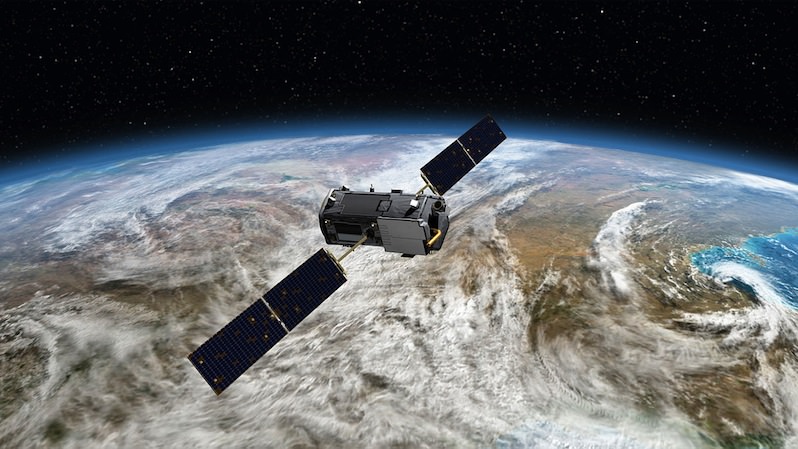NASA Will Now Study Climate Change From Space
The OCO-2 will monitor fluctuations of CO2 in the atmosphere, making note of where the greenhouse gases are rising and falling the most. NASA
NASA
By Thor Benson
In February 2009, the launch of a NASA satellite known as the Orbiting Carbon Observatory, meant to study CO2 levels from space, failed. The rocket that was supposed to lift the OCO malfunctioned and sent everything plummeting to Antarctic waters. The second version of the satellite, the OCO-2, launched Wednesday.
The launch of OCO-2 was originally scheduled for Monday, but it was delayed due to problems with a water suppression system that is used to “flow water on the launch pad to dampen the acoustic energy during launch,” according to NASA. It’s clear NASA did not take any chances this time around and all precautions were employed. Wednesday’s launch used a different rocket from the first — a more expensive Delta 2 model.
The OCO-2 is a $462 million mission to study climate change from space for two years. The satellite will monitor fluctuations of CO2 in the atmosphere, making note of where the greenhouse gases are rising and falling the most. It will be able to track where CO2 is naturally being absorbed by plant life and ocean life and where it is peaking far past natural absorption.
“It’s really the fate of carbon dioxide once it’s in the atmosphere that we’re trying to really put our finger on,” Michael Gunson, a scientist for NASA’s Jet Propulsion Laboratory, said at a recent news conference. We’re already aware of what is producing the CO2, but NASA will now be able to track what’s happening with it.
CO2 levels have reached over 400 parts per million for the first time in recorded history. “CO2 concentrations haven’t been this high in millions of years. Even more alarming is the rate of increase in the last five decades and the fact that CO2 stays in the atmosphere for hundreds or thousands of years,” Dr. Erika Podest, a NASA scientist for the Water and Carbon Cycles Group, said in response to that milestone. Dr. Josh Willis, another NASA scientist, responded, “We’ve put the planet on a high-carb diet for over a century. Time to get lean and go green.”
As Bill Nye the Science Guy put it in a CNN debate: “It’s the rate [of CO2 rise] that is of great concern, more than the actual number itself. … It’s human activity.” Considering plants and ocean life feed off of CO2, many would presume that more CO2 is a good thing, but science proves otherwise. The world was warmer and contained more CO2 100 million years ago during the Early Cretaceous period, but “we’re unburying it and burning it over a time scale of 100 years, a million times faster,” climatologist Michael Mann explained to Slate last year. Our planet is not equipped for such a drastic change.
If the OCO-2 can monitor where the carbon dioxide levels are rising and falling the most, NASA can make educated recommendations for how to deal with the existing situation. From a polar orbit 438 miles above Earth, the OCO-2 will track carbon dioxide levels by measuring how intensely the sunlight is being reflected by the carbon dioxide in the atmosphere in certain places. Once it has collected the data, NASA plans to allow the public to access it for free. Such a satellite reportedly will be able to circle our planet every 100 minutes.
NASA is led by scientists who are far too familiar with how man-made industry is affecting our atmosphere, and it is apparent that they are doing what they can to help understand the situation. NASA expects to start making data from the satellite available early next year.
Thor Benson is a traveling writer who currently lives in Los Angeles. He has written for Slate, Vice, Fast Company and many others. Follow him at @thor_benson.
Your support matters…Independent journalism is under threat and overshadowed by heavily funded mainstream media.
You can help level the playing field. Become a member.
Your tax-deductible contribution keeps us digging beneath the headlines to give you thought-provoking, investigative reporting and analysis that unearths what's really happening- without compromise.
Give today to support our courageous, independent journalists.

You need to be a supporter to comment.
There are currently no responses to this article.
Be the first to respond.